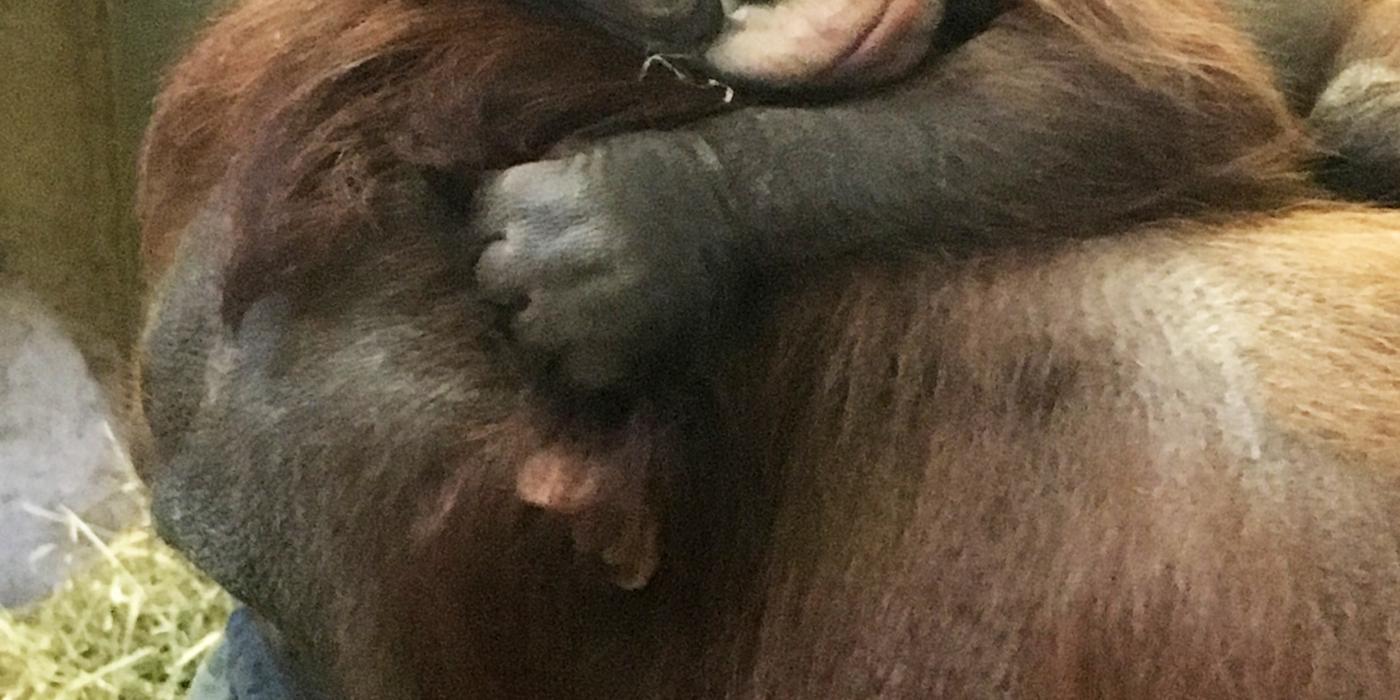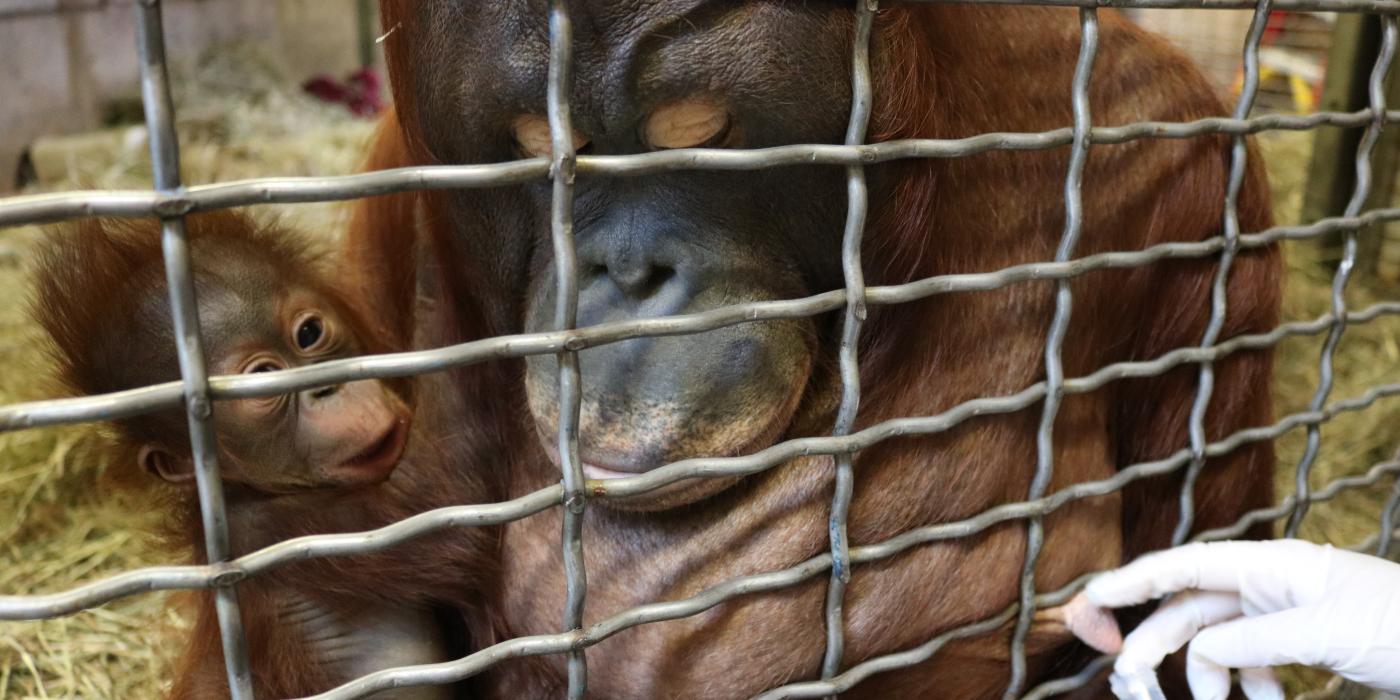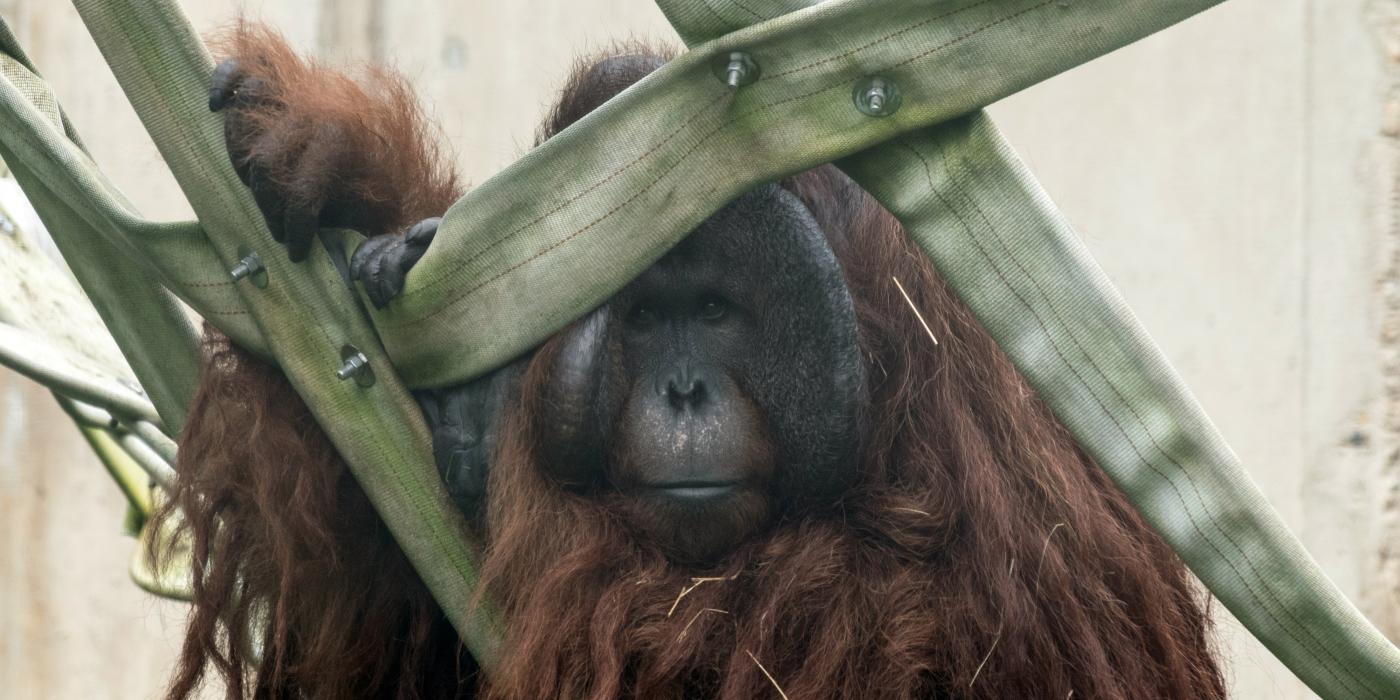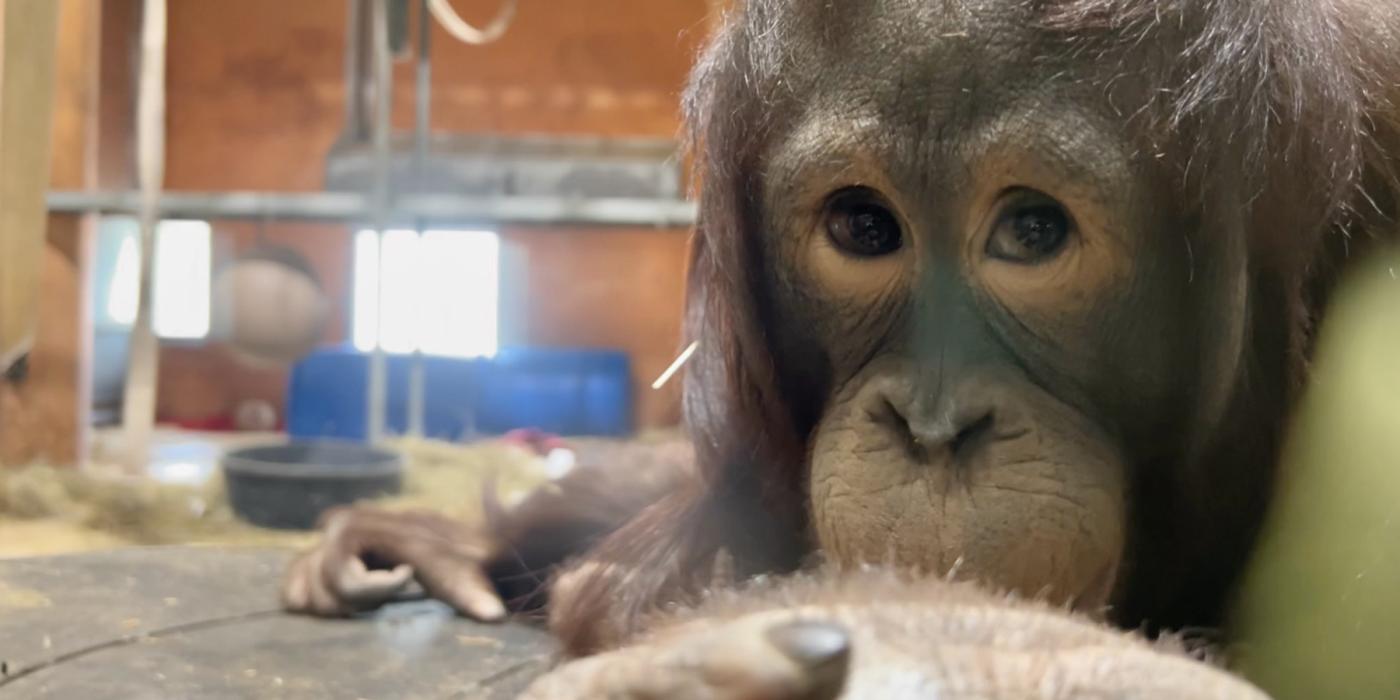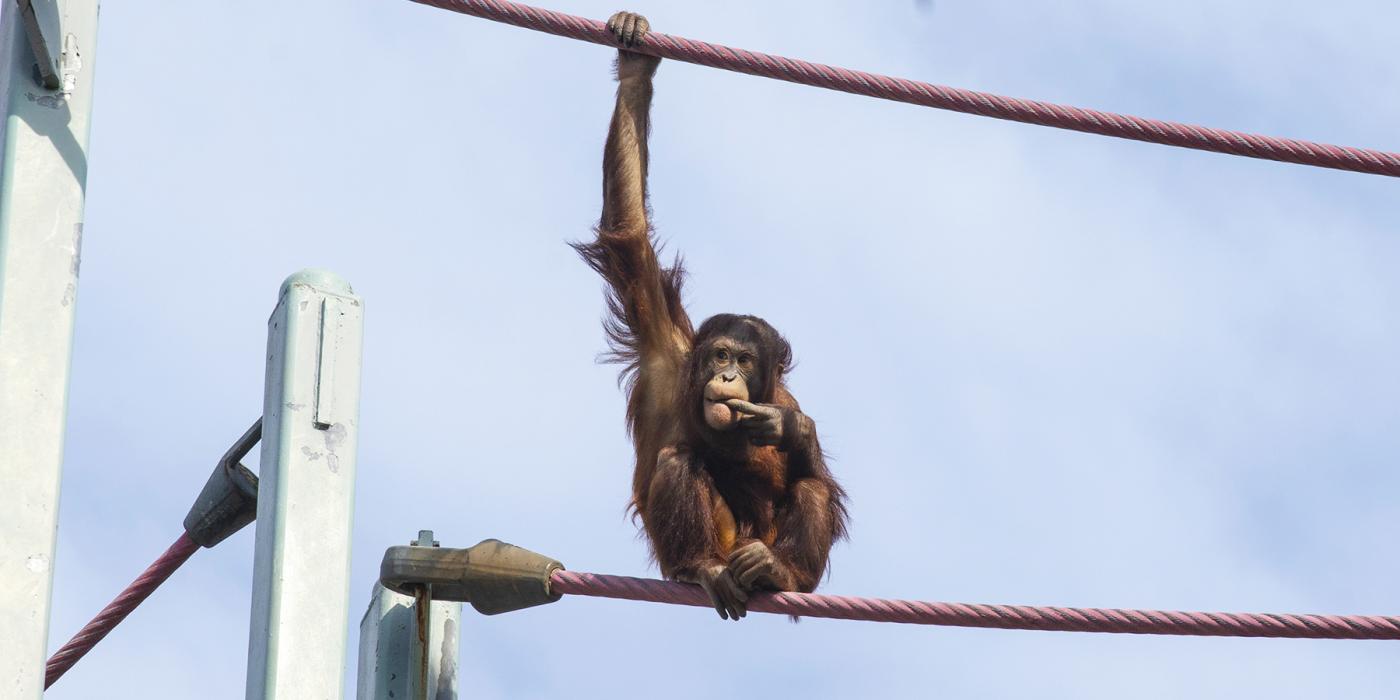Bornean Orangutan Redd's Social Circle is Growing
What has the Zoo’s 10-week-old Bornean orangutan, Redd, been up to? His social circle is expanding, says keeper Erin Stromberg, and his personality and curiosity are starting to develop! Get the latest on Redd and his mom, Batang, in the latest keeper Q&A.
What have you learned from watching Batang and Redd?
What’s most surprising to me is how fast Redd is developing. With every passing week, he seems to focus more intensely on the things around him. Batang seems to be raising Redd to be very curious and exploratory. While Batang always maintains physical contact with Redd, her parenting style is fairly laid back in that she doesn’t hold him so close to her that he can’t explore. Instead, he can sit in her lap, or on her head, and check out the enclosure, the other orangutans, the enrichment and the keepers. She is very mindful of where he is, but she doesn’t dictate his every move.
It’s not unusual to see him using his hands and feet to explore. Redd holds onto mom but sometimes, if he has an arm or leg free, he will touch the enrichment toys or the other orangutans. He even grabbed a handful of Bonnie’s hair the other day! Of course, being an experienced mom, she took it all in stride.
When Batang wants to move around the exhibit, her default is to put Redd on her head. More often than not, she places him upside-down. But Redd is getting the hang of scooting around until he’s right-side up. That way, he’s in a better position to see what’s going on.
How do the adult orangutans react to Redd?
Bonnie, Kyle, Kiko and Iris all seem to be very respectful of Batang, and she does not appear to have any concerns about them being around Redd. Occasionally, she will swat their hands away if they reach out to touch him. Interestingly, they don’t ‘steal’ enrichment items from her as often as they normally would. If the item is a particularly popular one, occasionally they will compete for the toy or try to grab it from one another. But, lately, they’ve been sharing enrichment and working on it together.
Aside from mom, Redd has taken a special interest in Bonnie—and it appears that the feeling is mutual! Batang is very comfortable around Bonnie, and Bonnie takes every opportunity to be close to Redd. She will touch him with her hands or her lips (orangutans explore their environment with their mouths). Redd is just as eager to reach out to Bonnie, though Batang is the only one that holds him.
Kyle, Redd’s father, will occasionally steal a moment with Redd while Batang’s back is turned. The other day, she was working on some enrichment and had placed Redd on her head so both hands could be free. Kyle came up behind them, pursed his lips, and put them on Redd’s head. It looks a bit like a kiss, but it’s an orangutan’s way of investigating something new! At his previous home, Kyle grew up with younger siblings, so he has experience with youngsters. When the opportunity to be close to the infant without repercussions arises (i.e. Batang swatting him away), he definitely takes advantage.
Iris and Kiko did not have experience with infants prior to Redd, so they are not quite as interested as Bonnie and Kyle when it comes to interacting with him. However, the relationship between Batang, Iris and Kiko hasn’t changed. They spend time together and forage as they normally would. Occasionally they will glance over at Redd, but they’re not as apt to approach him.
Is Batang exploring the exhibit?
Now that Batang has been introduced to her two social groups (Bonnie and Kyle in one, Iris and Kiko in the other), she is spending more time on exhibit. Though, she still prefers to take her nap in an enclosure that is off-exhibit.
Batang is trying to strike the right balance of climbing with Redd in tow. She will perch in a tree or climb the fire hose, which helps her gauge how well he hangs on. The process has been a learning experience for both of them.
To help build up her confidence and encourage her to climb, keepers place her favorite enrichment items—like hay feeders and boomer balls—high up in the trees. Both toys have holes, and keepers will stuff a mixture of hay and treats inside. Batang then has to use her fingers, tools, or shake the objects to get the treats out.
What else is new with Batang?
Batang voluntarily participates in husbandry training—which includes presenting body parts for examination, opening her mouth so we can make sure her teeth are in good health, among other things. During these sessions, Batang will either put Redd on her head or sit him in her lap and hold him with her feet.
Recently, we started a new training session with Batang. Once a week, keepers collect 1 mL milk samples on behalf of the nutrition lab, who use those samples to analyze hormones and nutrients such as fats, proteins and sugars. To collect the milk we will either gently manipulate her nipple or use the breast pump. We did the same study in 2009 when western lowland gorilla Mandara gave birth to Kibibi.
Related Species:

